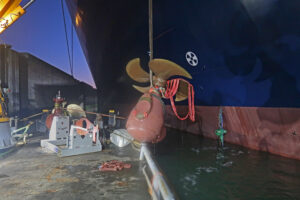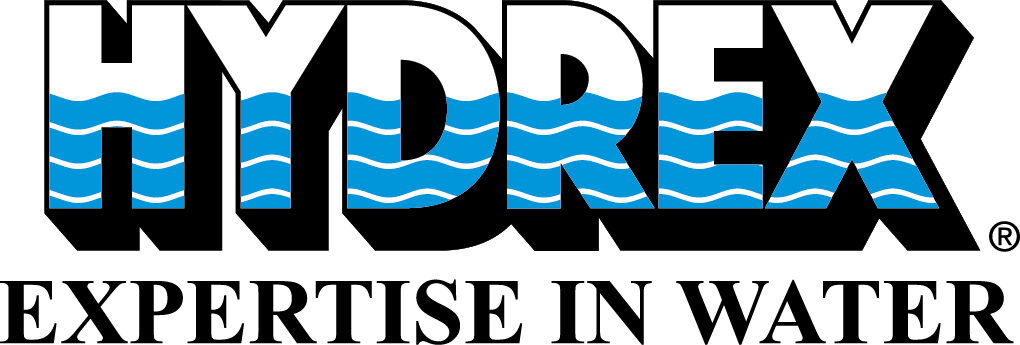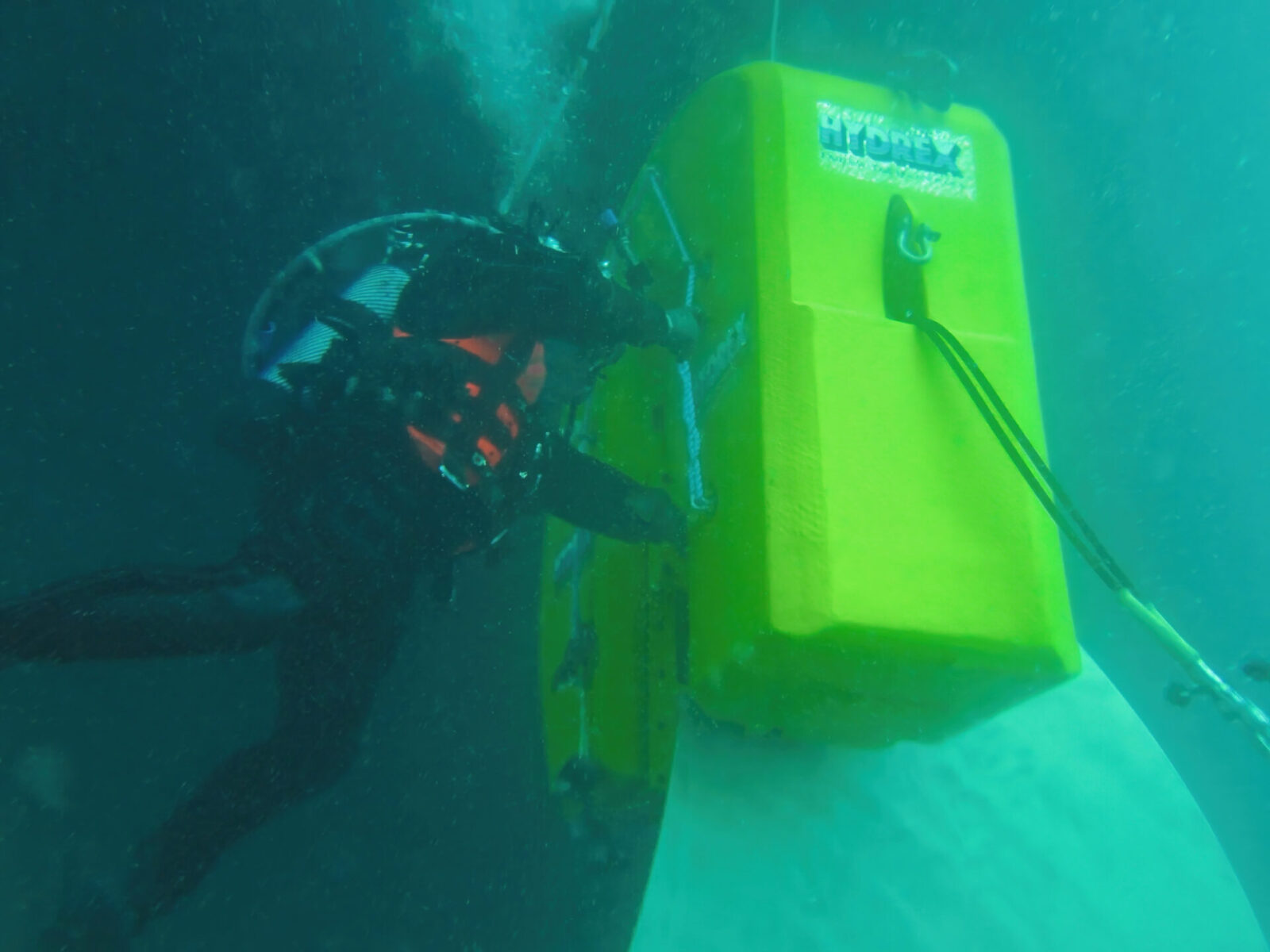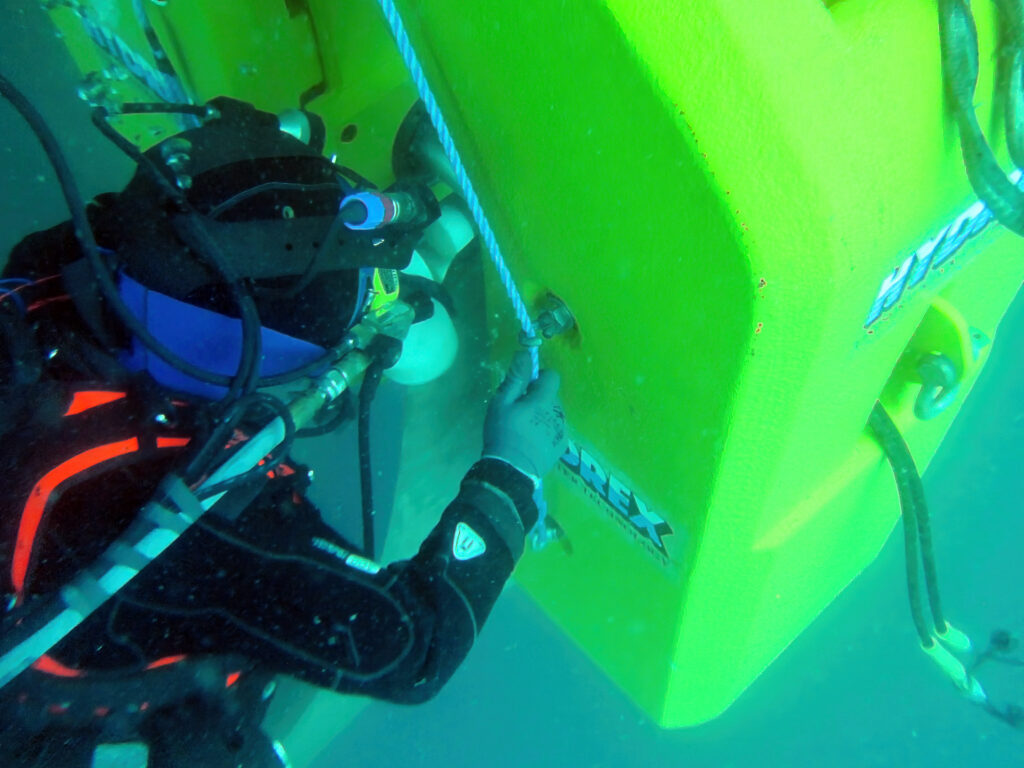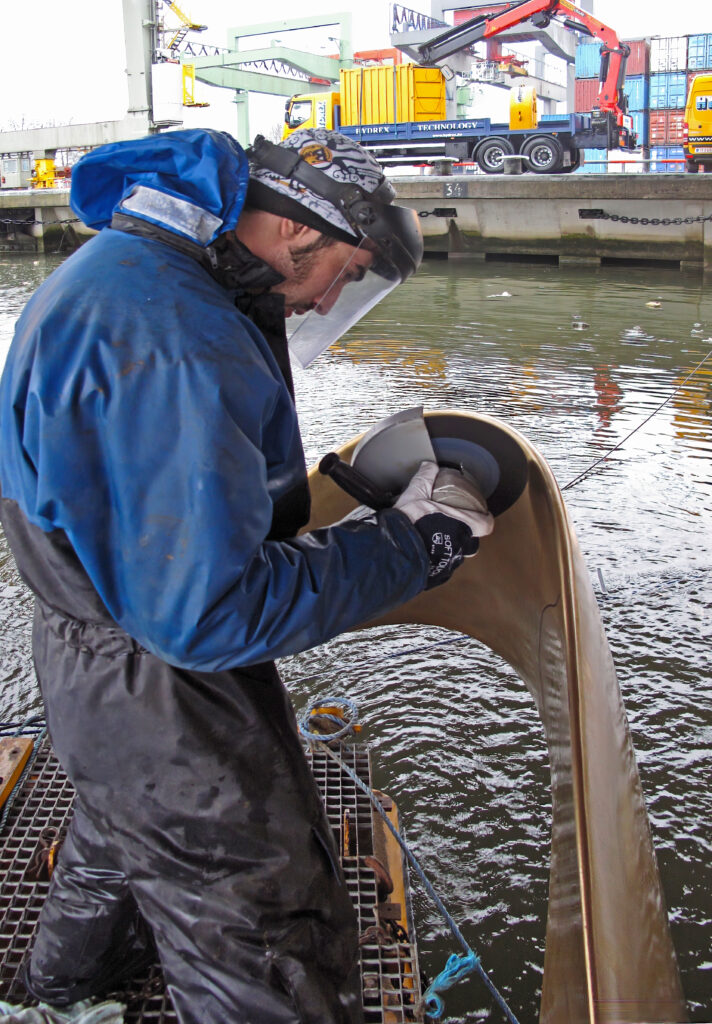This year Hydrex celebrates its 50th anniversary. To commemorate this, we will be looking back at a few memorable case studies of each of the services we offer to our customers. We are starting with propeller repairs.
In its quest to provide cost-effective services to customers, Hydrex developed procedures to address different kinds of damage to propellers. This research led to the design of the Hydrex cold straightening machine, which was first used in 2002. By taking advantage of this technique, damaged blades can be straightened underwater, allowing the ship to return to commercial operations without the need to drydock. New models of the straightening machine are regularly put into service. They are compatible with the existing models and are used to restore more severely bent propeller blades to their original condition.
If the damage is beyond repair, the damaged blade will be cropped by our team, along with a corresponding section of the opposite blade, to restore the hydrodynamic balance. This kind of repair is carried out with the propeller blade cropping equipment developed by the Hydrex research department in 1985.
Blade replacement
On some occasions, an entire blade of a variable pitch propeller needs to be replaced. This work can also be carried out by our divers. They are trained to perform a wide variety of operations, both above and below the waterline, anywhere in the world and sometimes even in the most extreme conditions.
Permanent underwater propeller repairs
The Hydrex R&D department has also developed a repair system that allows Hydrex to perform permanent underwater repairs to every type of propeller in dry conditions with the ship still afloat and out of drydock. All kinds of repair or maintenance work can be carried out to propellers, twin propellers, variable pitch propellers, or other propulsion units.
This repair system can be transported by air to any location around the world from the Hydrex fast response centers within a very short time frame. It can be assembled and deployed very quickly (12 hours) on-site.
With the implementation of this technique, our diver/technicians can perform permanent repairs to all parts of the underwater ship propulsion system in drydock-like conditions while the ship is still afloat.
Underwater propeller blade straightening in the British Indian Ocean Territory in 2012
With all five blades of its propeller severely bent, a 290-meter container vessel needed a fast, on-site solution to restore the propeller’s balance and efficiency. Our divers are trained to carry out repairs underwater in the shortest possible time frame. A team was therefore mobilized to the ship’s location in Diego Garcia in the British Indian Ocean Territory to perform a cold straightening of the blades.
After the equipment arrived at the vessel’s location, the divers installed a monitoring station on a workboat and made all the required preparations. The workboat was positioned next to the vessel. The team leader then went on board to go over the safety procedures and to discuss the details of the operation with the captain and the chief engineer of the ship.
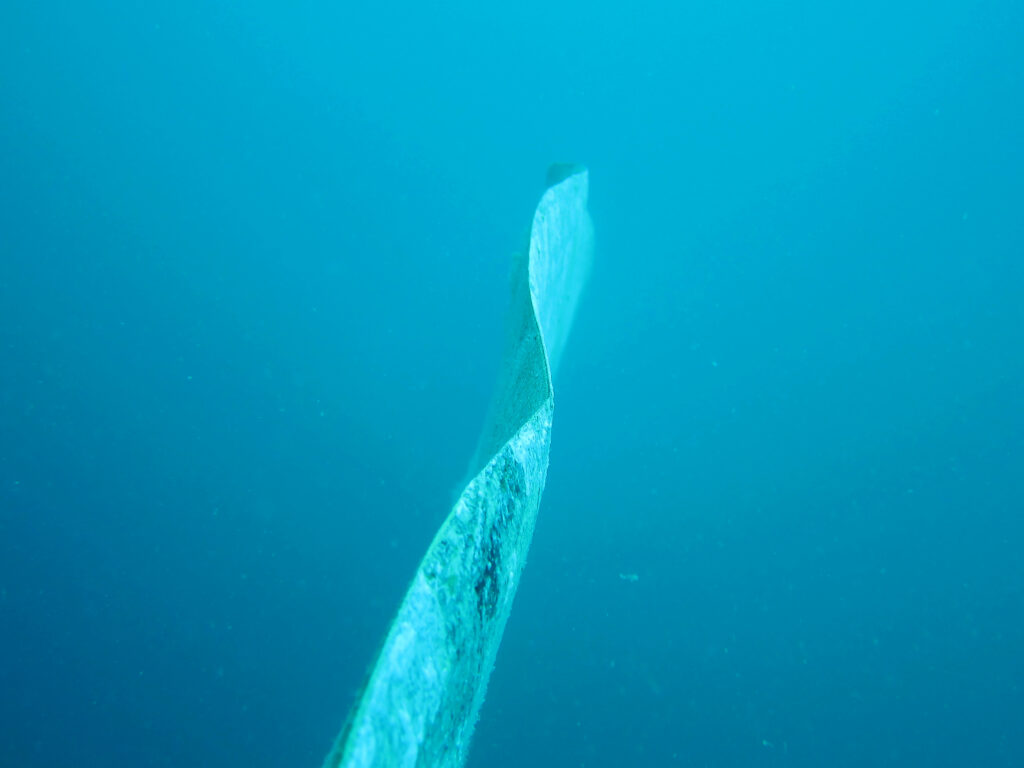
Next the team started the underwater operation with a detailed survey of the damaged propeller blades. Because fouling was present on the blades, the divers carried out a cleaning to be able to inspect the blades for stress fractures and cracks. The inspection revealed that the five blades had suffered multiple deformations along the trailing edges and that there were stress fractures and nicks in the same areas. Cracks were also found going up to 15 mm deep into the blades.

Part of the team then started the repair with grinding work on the blades to remove the cracks. Once this was done the locations were smoothed to recreate the hydrodynamic profile on the trailing edges. Meanwhile the rest of the team prepared the in-house developed hydraulic cold straightening machine for the operation. The divers then carefully positioned the machine over the bends of the trailing edges of the first blade. In close communication with the team leader on the workboat they applied pressure to return the bent blade to its original state. This procedure was then successfully repeated for the other four blades.
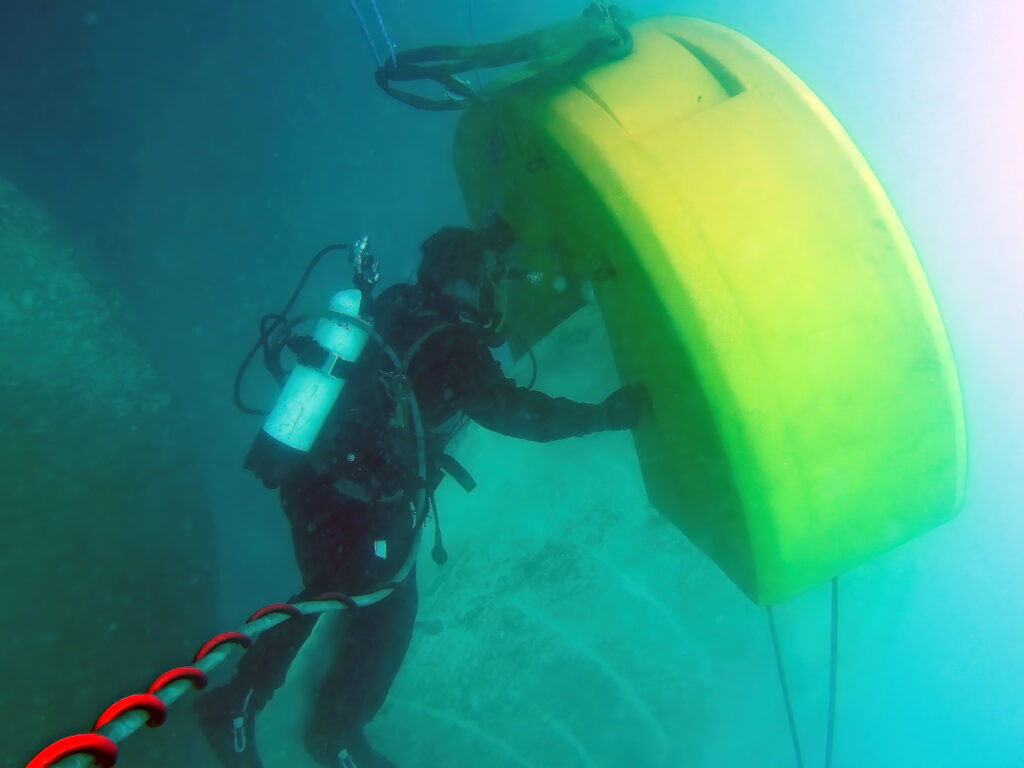
When the divers had also completed grinding and polishing repairs on all identified cracks and gouges, they made a full inspection of the newly modified blades for the attending ABS surveyor and the captain of the vessel. With all parties involved satisfied, the divers demobilized their equipment and returned home.
The operation restored the balance and the efficiency of the propeller. By carrying out the straightening on-site and underwater, we avoided a costly and time consuming drydock visit for the owner of the vessel.

Underwater propeller blade replacement in Tasmania
In early 2020, our team was mobilizing to a stern tube seal repair on a roro ship in Tasmania, when the owner of the vessel asked us to also carry out an underwater propeller blade replacement on the vessel’s sister ship at the same location. These operations were carried out back to back by our team.
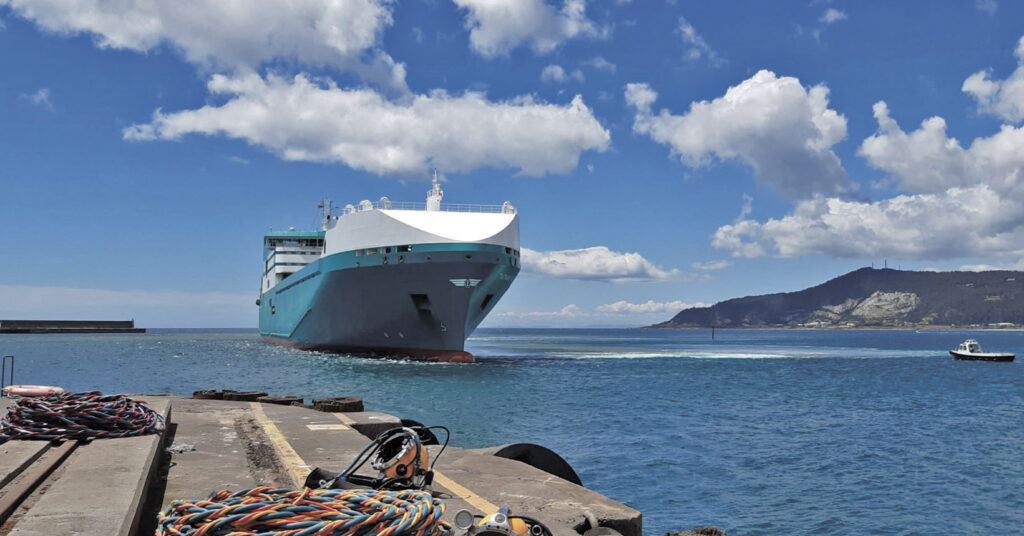
As soon as the seal replacement was finished the two ships changed place and our diver/technicians started the second repair. This operation consisted of the underwater replacement of the damaged blade as well as the opposite blade of the main propeller of the vessel.
The propeller was designed with a special system to close it off from water ingress during a blade replacement. The operation was performed under the supervision of an engineer of the propeller’s OEM.
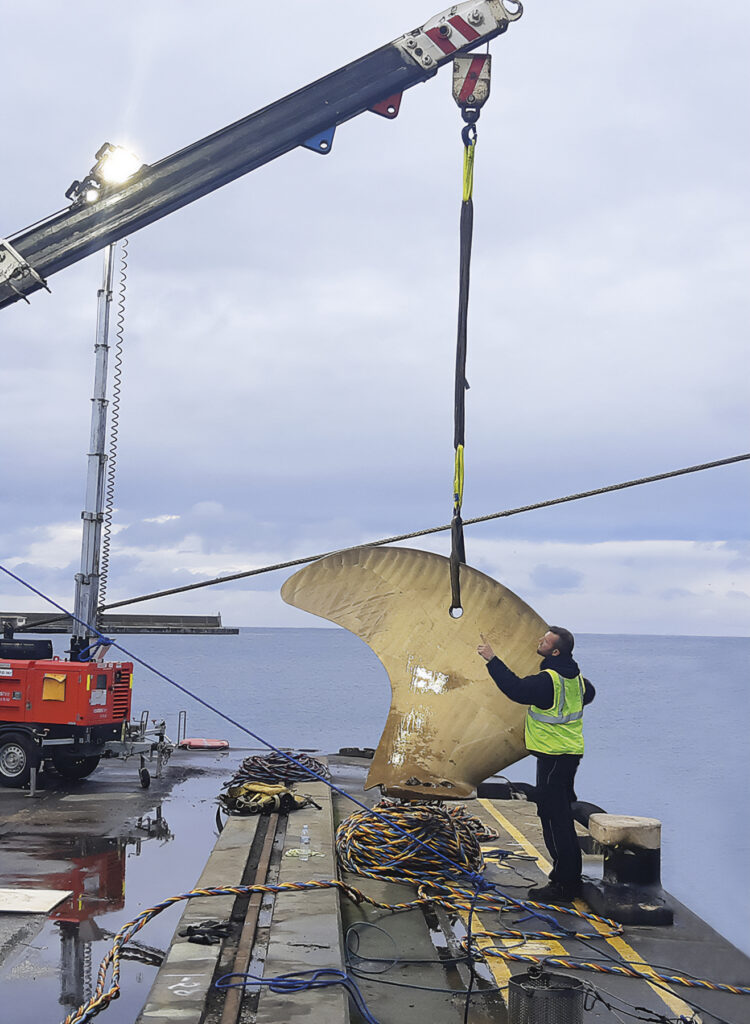
Our men started the repair with the installation of chain blocks to rig the first blade. They then removed the blade bolts and lifted the blade. A spare blade was lowered into the water and put in position. After it was secured and the bolts put on torque, the ship crew turned the propeller 180° to bring the opposite blade into the 12 o’clock position. This blade was then rigged with the chain blocks. The diver/technicians repeated the same procedure on this blade to replace it with its spare.
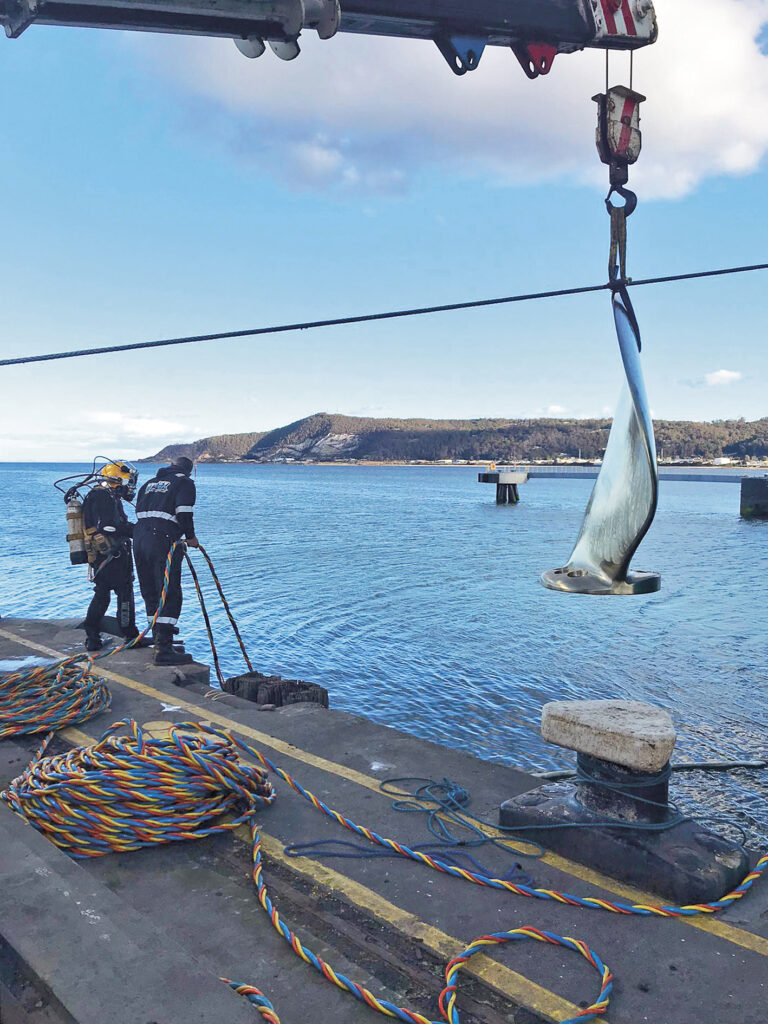
The operation was finished swiftly to enable the owner to sail his ship on schedule. No costly drydock visit had to be planned.
Linking jobs like this is no problem for Hydrex. Our technical department has many years of experience in organizing jobs on a tight schedule as well as back-to-back operations. Our teams are also trained to go from one job to the next without losing any time and without quality suffering in any way.

If ever you need assistance with the underwater part of your vessel, give us a call. We can then tell you if the repair is feasible and start working on its handling.
+32 3 213 53 00
hydrex@hydrex.be
Click on the images below for more case studies.

Underwater repair of leaking seal assembly in Trinidad

Underwater bow thruster removal and reinstallation in Australia
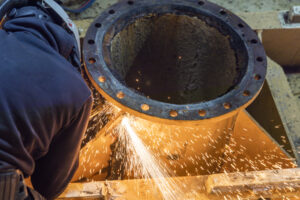
Scrubber overboard pipe repairs in Belgium and the Netherlands
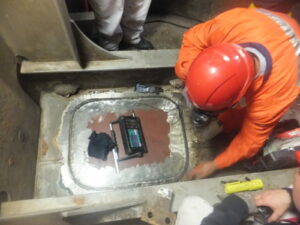
Insert installation in Uruguay prevents loss of contract

Double stern tube seal repair on second vessel in Tasmania confirms customer’s trust
